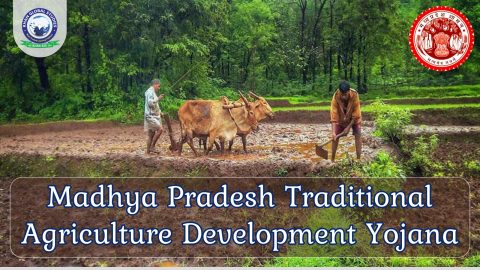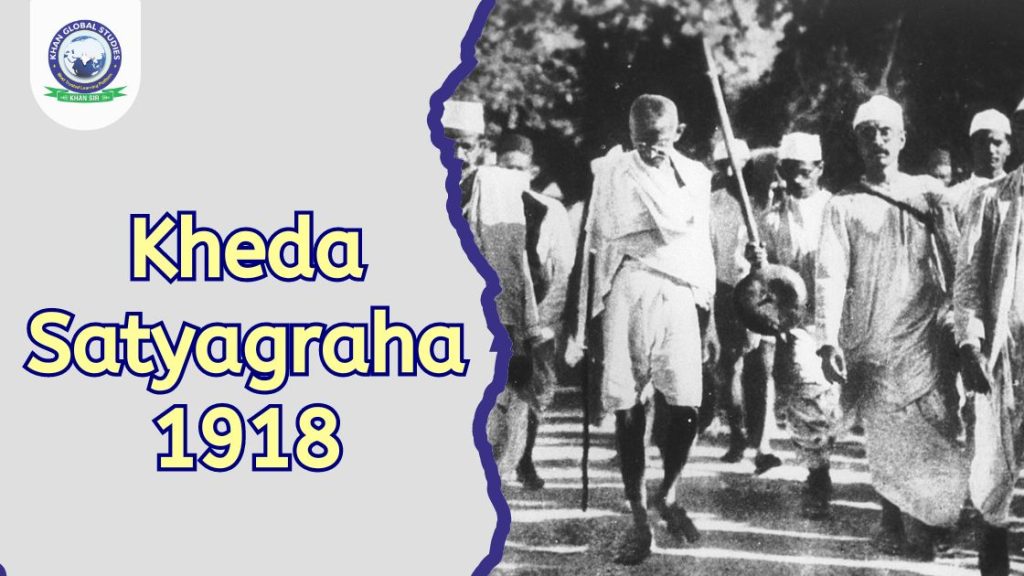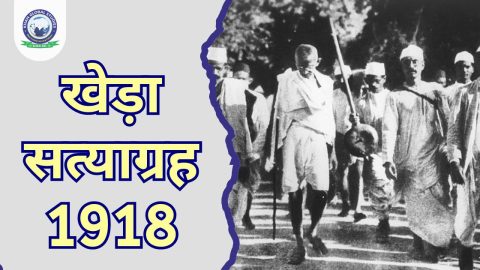The Kheda Satyagraha of 1918 stands as a pivotal moment in India’s freedom struggle. Led by Mahatma Gandhi, it marked a significant victory for the ideology of Satyagraha – Truth Force – against British colonial rule.
Date and Historical Context
This movement unfolded between March 22 and June 5, 1918. Gujarat, then under British control, had witnessed a devastating crop failure due to drought. The situation became worse with outbreaks of plague and cholera. Despite these hardships, the British administration imposed a rise of 23% in land revenue on the peasants of the Kheda district.
Causes and Gandhiji’s Role
The exorbitant tax demand on the poverty-stricken farmers ignited outrage. Recognizing their plight, Mahatma Gandhi, who had recently returned to India from South Africa, decided to intervene. He arrived in Kheda and mobilized the farmers, urging them to resist the unjust tax through non-violent means. Gandhiji believed that Satyagraha, based on truth and non-violence, would expose the immorality of British policy and garner national and international support for the cause.
Features of the Movement
The Kheda Satyagraha had several salient features:
- Peaceful Protests: Farmers under Gandhiji’s guidance refused to pay the increased tax. They held peaceful demonstrations and petitioned the authorities to reconsider their decision.
- Unity and Strength: The movement fostered a sense of unity among the farmers, empowering them to stand up for their rights.
- Publicity and Awareness: The movement garnered significant media attention, bringing national and international focus to the plight of the farmers and the oppressive British policies.
Significance and Effects
The Kheda Satyagraha proved to be a success. Facing mounting pressure and public disapproval, the British administration was forced to relent. They granted a complete exemption from land revenue for the year and a partial remission for the following year.
This victory had a profound impact on India’s freedom struggle:
- Validation of Satyagraha: The success of Kheda Satyagraha solidified Satyagraha as a potent tool for achieving political and social change. It inspired future non-violent movements against British rule.
- Gandhiji’s Leadership: Gandhiji’s leadership and strategic guidance were further cemented. He emerged as a powerful advocate for the rights of the oppressed masses.
- Nationwide Support: The movement fostered a sense of national unity and purpose in the fight for independence.
The Kheda Satyagraha stands as a testament to the power of non-violent resistance. It paved the way for future struggles that would ultimately lead to India’s freedom.
Beyond the Victory: The Long-Term Impact of Kheda Satyagraha
The success of the Kheda Satyagraha resonated far beyond the immediate relief it provided to the farmers. Here’s a deeper look at its long-term impact:
- Empowerment of the Rural Population: The movement instilled a sense of self-belief and empowerment in the rural population. They realized their collective strength and the possibility of challenging oppressive policies.
- Growth of Nationalism: The movement catalyzed the growth of nationalism in India. It brought together people from different regions and backgrounds in a shared cause against British rule.
- Inspiration for Future Movements: The success of Kheda Satyagraha became a blueprint for future non-violent movements in India. Leaders like Bhagat Singh and Subhash Chandra Bose drew inspiration from Gandhiji’s methods.
- International Recognition: The movement garnered international attention and sympathy for the plight of Indians under British rule. It exposed the exploitative nature of colonialism on a global stage.
Criticisms and Limitations
The Kheda Satyagraha was not without its criticisms. Some argued that it focused solely on the grievances of the landed peasantry, neglecting the plight of landless agricultural workers. Additionally, the long-term solution to poverty in rural India required more than just tax relief. Issues like land ownership reforms and infrastructure development remained unaddressed.
Conclusion
The Kheda Satyagraha of 1918 stands as a landmark event in India’s history. It marked a significant victory for non-violent resistance and solidified Gandhiji’s position as a prominent leader in the freedom struggle. While the movement had its limitations, its long-term impact on empowering the rural population, fostering national unity, and inspiring future generations remains undeniable. The Kheda Satyagraha serves as a reminder of the power of collective action and the effectiveness of non-violent resistance in the fight for justice.





